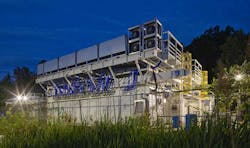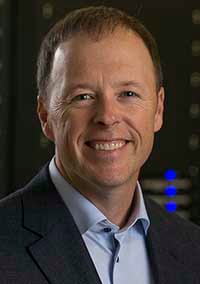A growing number of data center operators would like to end their reliance on diesel fuel for emergency backup power. Hydrogen is being advanced as a possible solution by both hyperscale operators and edge computing startups. Today our DCF Executive Roundtable panel looks at the pros and cons of using hydrogen to power data centers.
Our panelists include Flexential CEO Chris Downie, Nancy Novak of Compass Datacenters and Infrastructure Masons, Sabey Data Centers' Tim Mirick, and George Slessman, the CEO of DCX. The conversation is moderated by Rich Miller, the founder and editor of Data Center Frontier. Here’s today’s discussion:
Data Center Frontier: In early 2023 we’ve seen several announcements of plans for hydrogen-powered data centers. What are the potential benefits and barriers to the use of hydrogen in data center power?
Nancy Novak, Infrastructure Masons: The interest in using hydrogen as a replacement for back-up generators, and ultimately become the primary power source for a data center has risen dramatically in the past few years. The on-going efforts of companies like IBM, AWS and Equinix is beginning to bear some fruit as evidenced by Microsoft’s recent successful test of a 3MW fuel cell.
Like so many innovations within the data center industry multiple development initiatives are being conducted by the large hyperscalers. This makes sense in light of their energy commitments in future years. 2030 isn’t that far away. For them I don’t think they look at hydrogen as an "if" as much as a "when."
Like many alternative fuel sources, there are a number of obstacles to be overcome to make it a viable power alternative. For example, currently the production process is primarily reliant of fossil fuels which offset some of its benefits, but the continued migration to renewables will help alter this situation over time.
Another bump in the road is the relative lack of hydrogen due difficulties in compression, storage and transportation which also translates in price points well in excess of alternative solutions. However, I think it’s reasonable that the issues prove transient due to the commitment of hyperscalers to add hydrogen to the arsenal of renewable power options in the future.
For data center providers, there’s an opportunity for us to use new technologies like hydrogen to deliver renewable energy capabilities. However, we must enable a reliable supply-chain to use hydrogen on a large scale. A potential solution involves swapping fuel sources (such as natural gas used to power cells) with hydrogen as the capability to reliably deliver hydrogen comes on stream. Today it can be deployed in a small footprint, container-sized form-factor that could provide 1-2MW. The byproduct is steam at 120 degrees C. In conjunction with an absorption chiller, the energy from the steam can be used to provide for cooling for data centers.
At Flexential, our operations teams are working to evaluate many of these new fuel sources as we diversify our capabilities for the future as part of our commitment to an energy-efficient future. Our gen 5 designs already deliver PUEs of 1.4 or under and zero water usage, with the goal to drive this down further in future iterations. That’s why we have committed as part of our recent 1.2B ABS green financing initiative to direct funding for future builds and retrofit projects to be aimed at leveraging advances in sustainability.
Tim Mirick, Sabey Data Centers: We believe that there is tremendous potential in alternative power sources. With moves away from traditional base load energy, we’ll need to find new options to run our data centers when the wind isn’t blowing or the sun isn’t out. Hydrogen can be one of those options if we can get the scale in place to deliver the capacity efficiently and cost-effectively over time.
But fossil fuel is still generally required to isolate hydrogen, which raises the question of how quickly we can move to true zero carbon methods. We’re seeing many initiatives, stimulated by the Inflation Reduction Act (IRA), to put large new green hydrogen projects online. These are in their early stages, so pricing and availability remain to be seen.
Also, hydrogen power generation equipment (fuel cells or internal combustion) needs further development. In time, we believe hydrogen, as well as nuclear and hydroelectricity, will all play a role in replacing carbon-creating base load energy.
George Slessman, DCX:: I have no relevant experience with hydrogen powered systems.
NEXT: We look at the future of MegaCampuses and data center geography.
Keep pace with the fact-moving world of data centers and cloud computing by following us on Twitter and Facebook, connecting with DCF on LinkedIn, and signing up for our weekly newspaper using the form below:








